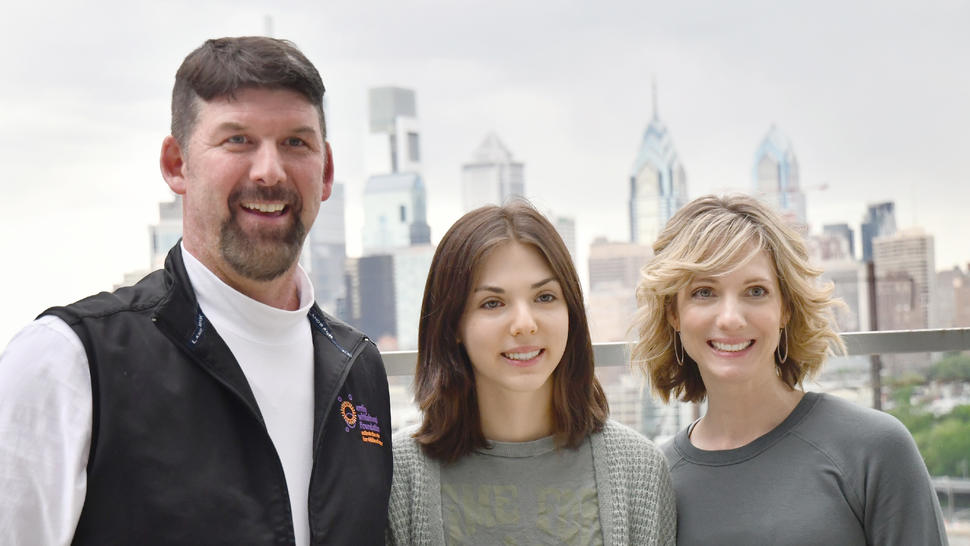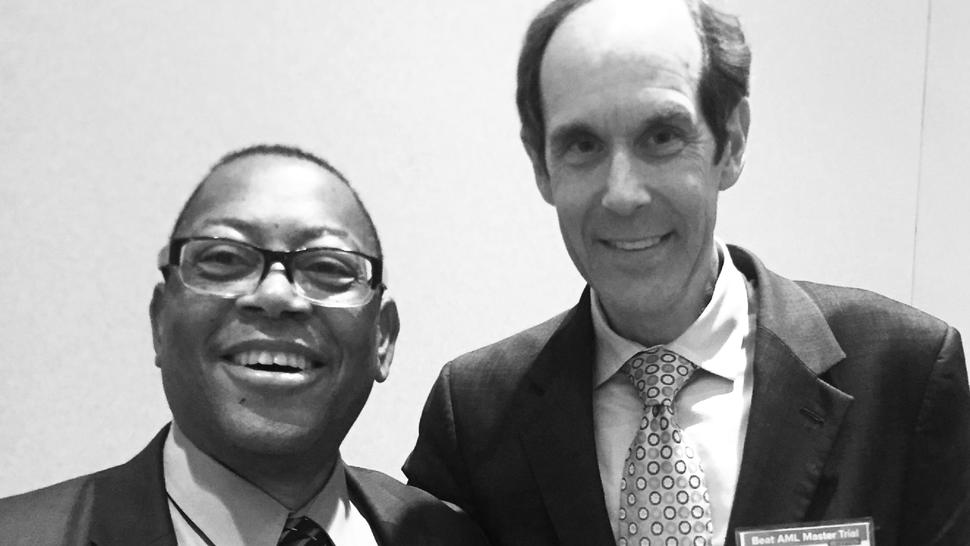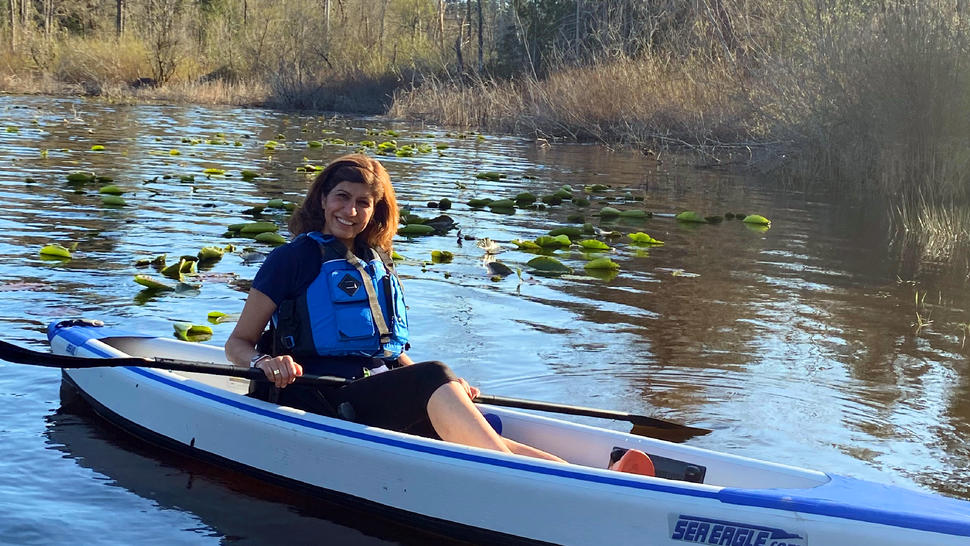Offering Hope through Better Treatments and Care
Significant advances in cancer treatment in the past few decades have revolutionized care. With targeted therapies, new approaches and technologies, and improvements in conventional treatments like chemotherapy, research is moving forward in ways that are bringing hope to families and ensuring a better quality of life for more patients touched by cancer.
Experimenting with Hope: How Cancer Research Saved Emily's Life
Emily Whitehead had just celebrated her 5th birthday in 2010 when she was diagnosed with acute lymphoblastic leukemia (ALL). More than 90% of children diagnosed with ALL are cured, but Emily relapsed twice. In April 2012, her parents, Tom and Kari, were told she had no more options. “It got to where Kari had to stop doing research [on treatments], because [it] showed Emily wasn’t going to survive,” said Tom. But, said Kari, “I thought, ‘this can’t be it. There has to be something else we can try.’”
Children’s Hospital of Philadelphia was running a clinical trial studying CAR T-cell therapy, which takes a patient's T cells (a type of white blood cell) and genetically modifies them to attack their cancer. When Tom and Kari found out about the trial, they didn’t hesitate to enroll Emily. “Some parents would think, ‘I’m not sure I want my child to be a science experiment,’ but trying these experimental studies is what leads to breakthroughs,” said Tom.
Emily was the first child to receive CAR T-cell therapy, and in May 2012—23 days after treatment—there was no cancer in her body. It has never returned. Inspired by their daughter’s recovery and the potential for this research to help other children, the Whiteheads launched the Emily Whitehead Foundation. Through the foundation, they’ve supported other families, funded research, and helped get the first CAR T-cell therapy approved by the FDA, making it more accessible to patients worldwide.
“My favorite part of our work is that we help families find better treatment options for their child fighting cancer,” said Emily, “So the child can have a more normal childhood and spend less time in the hospital.” Nine years cancer free, high schooler Emily enjoys playing with her chihuahua, Luna, painting, photography, and reading, and she wants to go to film school. A breakthrough in cancer treatment allowed her to be a kid again, and now she’s traveling the world to increase awareness of childhood cancer and the therapy that saved her life.
Once Terminal, Now Controllable
“My world changed in a matter of seconds,” said then-Army Major Mel Mann, on getting diagnosed with chronic myeloid leukemia (CML) in 1995. “I felt like I was underwater as I listened to the doctor’s voice, which floated toward me in sluggish and muffled waves.”
Mel was 37 and given 3 years to live. He needed a bone marrow transplant, but the problem was finding a match, as few African Americans were on the marrow donor registry. “Thoughts of my 5-year-old daughter raced through my mind,” he said. “Blindsided, I wondered if I would make it to my 40th birthday.” He retired from the army, moved to Atlanta, and began running bone marrow drives.
Three years later, in 1998, and with no match of his own, Mel’s white blood cell count rose and his health declined. An avid runner, he couldn’t even jog one city block. In August of that pivotal year, he enrolled in a clinical trial testing a new targeted therapy, imatinib (Gleevec). He knew that other African Americans were concerned about “the dark history of unethical experimentation,” but, he said, “I saw a clinical trial as a chance to get tomorrow’s medicine today.” By January 1999, he was back to running marathons.
At the same time Mel was fighting to survive, Oregon Health & Science University oncologist Dr. Brian Druker developed Gleevec and was working to get this game-changing drug tested in patients. It took lobbying the drug company for 4 years, but trials finally began in 1998. “During the clinical trials, we saw this miracle: once the patients were up to effective doses, we got a 100% response rate,” said Dr. Druker. “I saw patients’ hope for the future restored. Now, 20 years later, I’ve witnessed all that these patients have experienced—weddings, children, grandchildren—and many more life events that wouldn’t have been possible without Gleevec.”
Mel, a 26-year cancer survivor and the oldest living on Gleevec, credits Dr. Druker and the drug for allowing him to see his daughter grow up and become a physician. “I’d tell someone newly diagnosed with CML that today you can live a normal, long life. Keep setting goals and don’t lose hope. Take your medication and live every day.”
Advances in Care Give the Gift of Time
“I feel like we’re experiencing a renaissance in cancer care right now,” said Mitra Freer, an oncology clinic nurse at Swedish Cancer Institute and nurse educator at Fred Hutchinson Cancer Research Center in Seattle. Over a more than 25-year career, Mitra has been fascinated by the evolution in cancer care and treatment.
“We’re buying time for patients and extending their quality of life. We didn’t have this kind of hope 10 or 20 years ago,” she said, recalling a patient she cared for with metastatic breast cancer. Mary (not her real name) was not doing well but hoped to live long enough to see her grandchild born. It was the early 2000s, and trastuzumab (Herceptin) had recently been approved to treat HER2-positive breast cancer. “She asked me if it would allow her to see her grandchild and we said, we think you have a chance with this drug. She was able to see the birth of her granddaughter before passing away. Her daughter sent us a beautiful card of Mary holding her grandbaby. I remember her face to this day.”
As more targeted therapies and immunotherapies have emerged, Mitra described not only improved survival rates for certain cancers like breast and lung cancers, but also quality of life. "It's been amazing to see the trajectory of better treatments and fewer side effects. We might not always be able to provide a cure, but we can give patients time until the next possible treatment emerges,” said Mitra. Technologies like genetic testing for hereditary cancers as well as personalized medicine also evolved to better detect cancer. And cancer care has become comprehensive, with more thoughtful inclusion of palliative and mental health care.
Improving cancer care for all patients still has its challenges. Mitra particularly noted “financial toxicities”—the cost of care even after insurance approval—and lengthy insurance approval of treatments among the challenges. But she remains committed and dreams of a future where we see a cure for all cancers. Right now, “we might not be able to save everyone. I wish we could. But we can buy them time to do the things that matter to them like holding their grandbaby or seeing another birthday. If we can achieve that, then we have helped.”
Researcher Spotlights: Advances in Cancer Treatment and Care
Dr. Deborah Mayer
Oncology nurse who shaped policies and services to improve survivorship care
Deborah Mayer, Ph.D., R.N., always knew she wanted to be a nurse, so she started early—straight out of high school. Beginning in 1975, she worked as an oncology nurse at a time when, she says, the concept of survivorship did not yet exist. That concept has come a long way, and Dr. Mayer has had an active role in shaping the field. She’s held several influential roles throughout the years, including serving as president of the Oncology Nursing Society and being the only nurse appointed to the Cancer MoonshotSM Blue Ribbon Panel. With a background in clinical practice, education, and research, and as a cancer survivor herself, Dr. Mayer has used her unique perspective to develop policies and services that improve care and communication between survivors, caregivers, and providers.
Dr. Arti Hurria
World leader in geriatric oncology
Dr. Arti Hurria wanted to make a difference in the lives of older patients. A compassionate practitioner and world leader in geriatric oncology at City of Hope, she grew up a first-generation American whose parents were doctors from India. With a home life centered on science and medicine, Dr. Hurria couldn’t see herself in any other career. During an internship in 1995, she found her calling. Seeing little data about the needs of older patients with cancer, she set out to improve cancer care for older adults by running clinical trials focused on cancer and aging, creating the Geriatric Assessment to evaluate the overall fitness of an older person with cancer, advocating to further include older people in research, and more. She also founded the Cancer and Aging Research Group, which includes more than 400 clinicians and researchers. Following her untimely passing in 2018, colleagues, mentees, and patients reflected on her dedication, sense of humor, scientific excellence, and loving care.
A national commitment to progressing cancer treatment and care began in earnest with the National Cancer Act of 1971. Find out more about the importance of the act.
50 Years of Cancer Treatment and Diagnostics
Clinical trials, innovation in research, and technology have improved cancer treatment and diagnostics in public health. Listen to Healthcast’s National Cancer Act podcast series to learn more.



